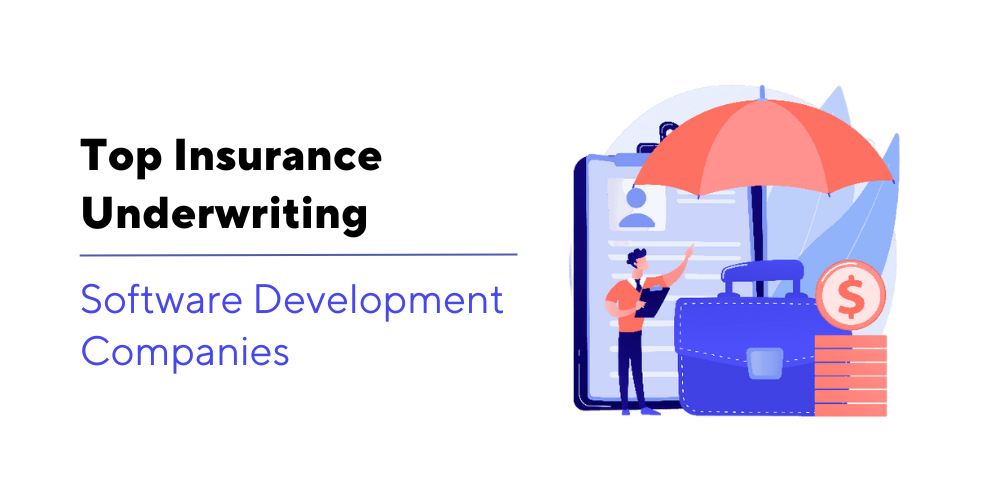Insurance underwriting involves assessing the information given by potential policyholders to understand the risks associated with issuing a policy to them. An underwriter prepares the premiums and terms of the coverage by assessing the applicant’s history, health status, and other critical personal data. However, as the insurance industry is expanding with a huge surge of digital data, manual underwriting has faced more errors and inefficiency due to demands on speed and volume. Automated, AI-driven insurance underwriting software can streamline the process by analysing huge amounts of data in record time. AI and machine-learning algorithms in underwriting software also perform thorough, error-free risk assessments much faster than manual underwriters.
Transforming risk assessment with insurance underwriting software
Automated underwriting in insurance can transform the insurance policy issuing process by streamlining its complexities. Introducing this software means taking an innovative approach to using the latest technology for insurance risk assessment. Enhanced by AI and machine learning technology, the automated underwriting system in the software speeds up the process and eliminates errors. It can help ensure that the assessment is completely unbiased, data-driven, efficient, and accurate. Data quality and algorithms in insurance underwriting software are expected to enhance the judgment of underwriters shortly. Let us see how automated underwriting software has transformed risk assessment in the insurance industry –
Speed and accuracy
Automated underwriting has been a game-changer in the insurance industry. It streamlines the tedious and time-consuming underwriting process. With the help of smart technology, automated underwriting makes it possible to assess a prospect’s risk factors quickly and accurately.
This technology can process huge and varying data sets, including structured and unstructured data. It also transforms this data into actionable points for the underwriters. This automated process of risk assessment has not only improved the speed and efficiency of underwriting but has also created a smooth assessment process. This reduces the risk of error and misjudgement.
Informed decision-making
Advanced analytics are given by automated underwriting software that can process huge amounts of data quickly. It thus offers a streamlined risk assessment process, allowing insurers to make the best of a more efficient, robust, and systematic approach to decision-making. This ultimately leads to faster policy issuance and increases the overall productivity of the company.
Customer-friendly
Automated underwriting software for insurance makes the whole policy issuance process customer-friendly. It can fast-track insurance applications, offering quick quoting capabilities and speeding up the issuance of policies. This improved efficiency adds to higher satisfaction among customers. Creating a satisfied customer base is a very important factor for insurance companies in today’s competitive insurance market, and automated underwriting software helps companies stay ahead of the curve.
Detailed risk assessment
Using AI and machine learning technology, automated underwriting software brings in thorough and measurable risk analysis. The software analyses large amounts of data to find out patterns, correlations, and emerging trends that will affect the outcomes in insurance. The analysis is also furnished by weighted scores indicating the level of risk associated with each applicant. This kind of analysis empowers insurers with a holistic and data-driven approach. It helps insurers understand the risks associated with customers and products while making sure that the right data is available for risk assessment as efficiently as possible.
Productivity
AI-powered underwriting software for insurance takes off the burden of multitasking manually from the shoulders of underwriters. It automates repetitive routine tasks, streamlines processes, and increases efficiency in decision-making. The elimination of manual workload frees up time for underwriters to focus on more complex cases needing detailed assessment. Using AI and machine learning in insurance underwriting also gives more visibility to the patterns, trends, or insights that may go unnoticed in the traditional methods. The resulting boost in productivity leads to quicker service, organized operations, and increased employee satisfaction.
Streamlined underwriting process
AI engines can shift the entire IT infrastructure to centralized data, efficiently fetching it from multiple sources and standardizing it. As a result, everything from claims history to market trends gets operated from a single hub. It also undergoes routine validation and periodic updates. This streamlines the entire underwriting process by ensuring integrity and reliability.
Conclusion
Bringing AI-driven, automated software to the insurance industry creates several opportunities for efficiency, innovation, and customer satisfaction. It eliminates manual error, simplifies the handling of data, and performs accurate and thorough risk assessment to ensure maximum profit and potential for growth.
To read more content like this, explore The Brand Hopper
Subscribe to our newsletter
Go to the full page to view and submit the form.

